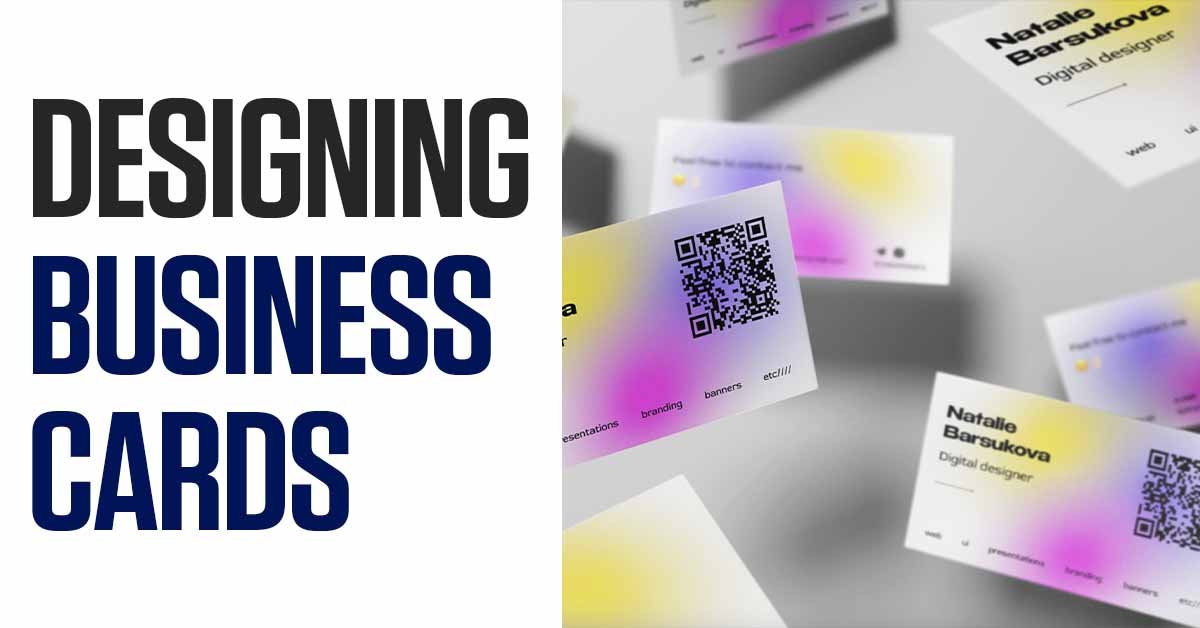Introduction
A business card is more than just a piece of paper with your contact information; it’s a powerful marketing tool that can leave a lasting impression on potential clients and partners. A well-designed business card reflects your brand’s identity and professionalism, making it an essential element in your branding strategy.
The Importance of Business Card Design
- First Impressions
- A business card is often the first tangible representation of your brand that a potential client or partner encounters. A thoughtfully designed card can convey professionalism, creativity, and attention to detail, setting the tone for future interactions.
- Brand Identity
- A business card is an extension of your brand. Consistent use of brand colors, logos, and typography helps reinforce your brand identity and makes your business more memorable.
- Networking Tool
- Business cards are essential for networking. They provide a convenient way to share your contact information, and a unique design can make your card stand out in a stack, increasing the chances that it will be kept and remembered.
- Tangible Marketing
- In a digital age, a physical business card offers a tangible connection to your brand. It’s a personal touch that can complement your digital marketing efforts and leave a lasting impression.
Key Elements of a Memorable Business Card (continued)
- Simplicity and Clarity
- Keep the design clean and uncluttered. Your business card should communicate the most important information—your name, job title, company name, and contact details—without overwhelming the recipient. Less is often more when it comes to effective business card design.
- Legible Typography
- Choose fonts that are easy to read. Avoid using too many different fonts, and ensure that the text size is appropriate. Your contact information should be legible at a glance, even in low-light conditions.
- Quality Materials
- The quality of the paper or card stock can significantly impact the impression your business card makes. Thicker, higher-quality materials convey a sense of professionalism and durability. Consider finishes such as matte, gloss, or textured options to enhance the feel of the card.
- Brand Consistency
- Your business card should align with your overall brand identity. Use the same colors, logos, and design elements that are present in your other branding materials. Consistency helps build recognition and trust in your brand.
- Creative Design Elements
- Don’t be afraid to incorporate creative elements that reflect your brand’s personality. This could include unique shapes, die-cuts, embossing, foil stamping, or other special effects. However, ensure that these elements don’t detract from the card’s primary purpose—communicating your contact information.
Design Tips for Effective Business Cards
- Balance Form and Function
- While creativity is important, remember that the primary purpose of a business card is to convey information. Ensure that any creative elements enhance, rather than hinder, the card’s functionality.
- Use White Space Wisely
- White space (the areas of the card without text or images) is crucial for creating a clean and professional look. Don’t overcrowd your card with too much information. White space helps the important details stand out.
- Consider Both Sides
- Use the back of the card to provide additional information or to showcase a unique design element. This could include a logo, a tagline, a QR code, or a list of services. Just be sure that the design on the back doesn’t make the card too busy.
- Test Print Before Finalizing
- Always print a test version of your business card before committing to a full print run. This allows you to check for any design or layout issues and ensure that the colors and text appear as intended.
- Stay Updated with Trends
- Keep an eye on design trends in business cards, but don’t feel obligated to follow them strictly. Use trends as inspiration, but always prioritize what best represents your brand and suits your industry.
Examples of Innovative Business Card Designs
- Minimalist Design
- A minimalist design focuses on simplicity and elegance. By using ample white space, subtle colors, and clean typography, minimalist cards make a strong impact without being overly complex.
- Interactive Cards
- Some business cards incorporate interactive elements, such as fold-outs, pop-ups, or cards that transform into something else (e.g., a stand, a small booklet). These designs are memorable and can engage the recipient in a unique way.
- Eco-Friendly Materials
- With growing environmental awareness, many designers are opting for sustainable materials, such as recycled paper or plantable seed paper. These eco-friendly options can align with your brand’s commitment to sustainability.
- Multifunctional Cards
- Some business cards serve a dual purpose, such as doubling as a bookmark, a mini brochure, or even a small tool (like a ruler or a USB drive). This adds value to the card and increases the likelihood that it will be kept.
Conclusion
A well-designed business card is a powerful tool in your branding arsenal. It’s not just about sharing contact information; it’s about making a lasting impression, reinforcing your brand identity, and creating a tangible connection with your audience. By focusing on simplicity, legibility, quality materials, and creative design, you can create a business card that stands out and effectively represents your brand. Remember to balance creativity with functionality, use white space wisely, and consider both sides of the card to maximize its impact.
